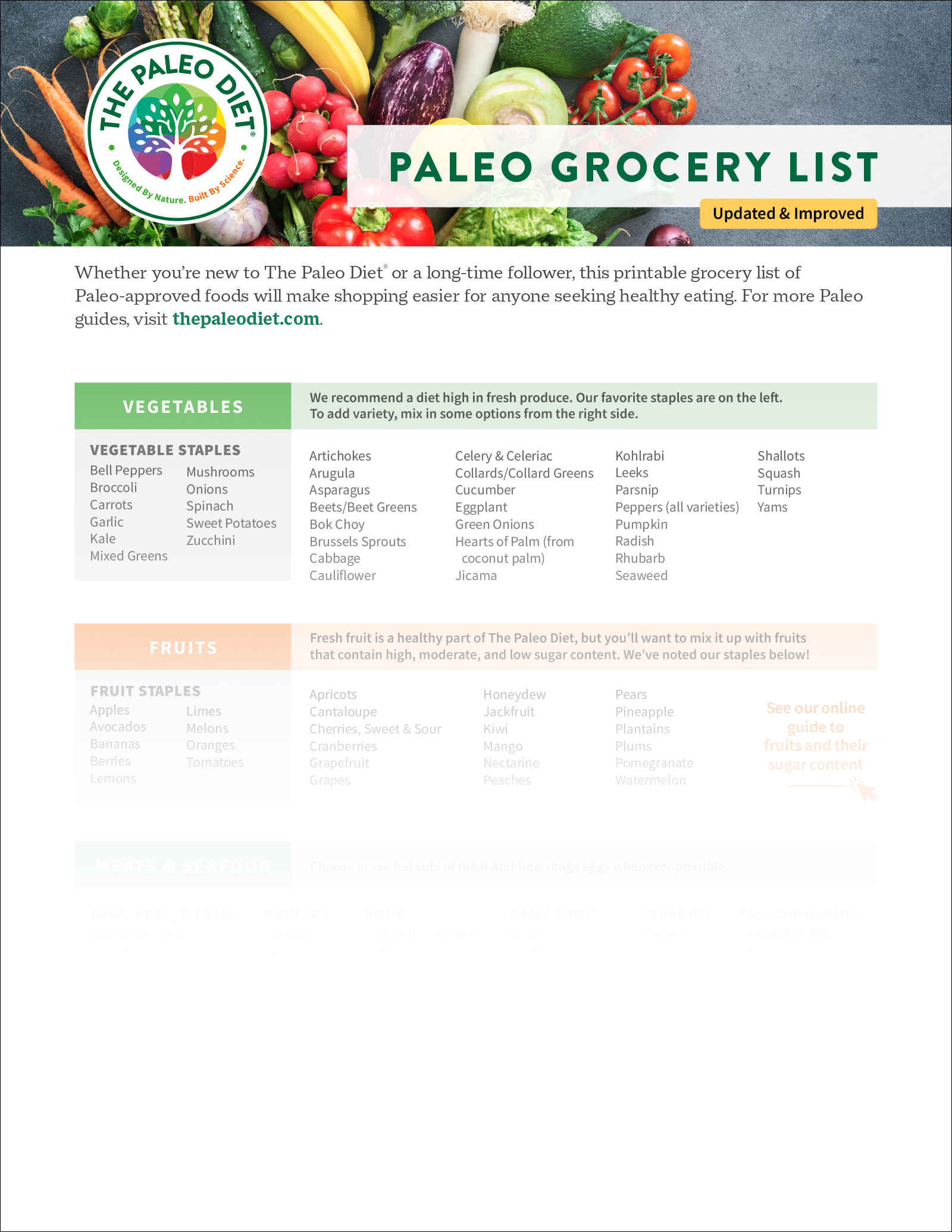Untangling the Confusion Around Food Health Claims

After decades of criticism that foods like sugary cereals and fortified white bread could be labeled as “healthy,” the U.S. Food and Drug Administration (FDA) proposed changes to the definition of “healthy” for food products in early 2025.1 The announcement makes this a good time to understand all food health claims on packaging.
The average grocery store carries more than 59,000 items.2 Nearly every product has a nutrition facts panel, ingredient list, and a value stack of words on the front and back to convince you to purchase it. According to a 2024 survey by Prinova, 72% of 1,582 respondents in the United States and Europe said they were more likely to buy a food or beverage if the packaging mentioned a health benefit.3
Do these food health claims have any validity? Opinions vary. The FDA assures the public that health claims are substantiated with scientific evidence and are designed to guide individuals toward healthier eating within the public health framework.
Alongside the FDA, the Federal Trade Commission investigates and takes legal action against companies making misleading food health claims to protect the public from fraud.4 However, health advocates question whether these labels add confusion or clarity, especially with outdated public health advice that supports low-fat, high-sugar foods.5,6
RELATED: How Health Literacy Can Transform Nutrition & Lifestyle Choices
A perfect example of this is a 2024 decision by the FDA to approve a qualified health claim for yogurt and diabetes.7 The ruling allows yogurt brands to claim: “Eating yogurt regularly, at least 2 cups (3 servings) per week, may reduce the risk of type 2 diabetes. FDA has concluded that there is limited information supporting this claim.”
The agency said a yogurt formulation that exceeds 13 g of total fat, 4 g of saturated fat, 60 mg cholesterol, and 420 mg of sodium would not qualify for the health claim. Yet, the FDA did not include a disqualifying level for added sugar, even though this is a significant contributing factor to diabetes. Instead, the FDA recommends “careful consideration” using the yogurt/diabetes health claim for highly sweetened brands given that many Americans exceed the daily recommended sugar intake, now set at 50 g or 12 teaspoons.
RELATED RECIPE: Dairy-Free Coconut Yogurt
If this advice has you shaking your head (or mumbling obscenities), this is just one example of how contradictory these food health claims can be. It’s the reason that The Paleo Diet® goes beyond public health guidance to provide what we believe is a healthier way to eat and live your life than government-agency advice.
Defining Various Food Health Claims and Guidances
Eating a diet abundant in fruits, vegetables, and proteins and minimally influenced by processed foods with sodium, sugar, and additives makes most health claims on packaged foods less critical to your buying decisions. That said, knowing what these claims mean and how they are decided helps you make confident buying decisions and save money.
Health Guidance & Production Process Attributes
These are plastered everywhere. Some sound like public service announcements, such as “fruits and vegetables maintain good health.” In contrast, others describe ingredients: think of “100% natural,” or manufacturing and farming practices like “raised without antibiotics.”
There is little oversight on these terms unless they raise alarm bells as misleading. For example, poultry companies that didn’t use antibiotics to fatten their hens labeled their brands as “free of antibiotics.” The FDA said this was misleading given that it was impossible to verify the finished product would be absolutely free of residual antibiotics.
A health claim goes deeper into the specific relationship between a food, food component, or dietary supplement ingredient and reduced risk of a disease or health-related condition.8 Within FDA oversight are three claim categories: health claims, nutrient content claims, and structure-function claims.
Health Claims
Authorized health claims have FDA oversight and must be supported by significant scientific agreement standards (SSA).9 Since 1990, the FDA has approved 12 of these claims (one revoked) that make a substantiated connection between a food and a disease claim. The language might say, “A healthful diet with adequate folate may reduce a woman’s risk of having a child with a brain or spinal cord birth defect.” See the complete list of authorized health claims here.
Qualified health claims are based on emerging evidence that does not meet SSA standards. Unlike authorized health claims, these are often in response to First Amendment challenges to SSA, but are “qualified” to reflect the supporting science. According to the FDA, they must not be misleading but can evoke comments from nutrition experts who disagree with the level of confusion.
Nutrient Content Claims
Nutrient content claims describe the nutrient level in the product, such as “free,” “high,” and “low,” or they compare the level of a nutrient in a food to that of another food, using terms such as “more,” “reduced,” and “lite,” or they call out a percentage of a desired nutrient. Most nutrient content claim regulations apply only to nutrients with an established Daily Value.
The term “healthy” is an implied nutrient content claim, which suggests a food has a certain nutrient level without explicitly stating the amount. For example, “high in oat bran” is an implied nutrient content.
As mentioned earlier, the term “healthy” is being redefined for total fat, saturated fat, cholesterol, and sodium levels. The main shift in the FDA’s new proposed definition of healthy is the allowance of healthy fats, including fish, meats, eggs, extra-virgin olive oil, oil-based salad dressings and spreads, and nuts. The new regulation would strike “healthy” from fortified white bread, highly sweetened yogurt, and overly sweet cereals.
Structure-Function Claims
These claims for foods and dietary supplements (under the Dietary Supplement Health and Education Act or DSHEA) describe the role of a nutrient or dietary ingredient and how it affects the normal structure or function of the human body. A food structure-function claim could be that omega-3 fatty acids in fish support healthy brain function, but it could not say that it prevents Alzheimer’s disease.
Dietary supplement makers may use structure-function claims along with substantiation, such as “supports immune health,” “antioxidants maintain cellular integrity,” or “reduces the risk of inflammation.” Statements cannot make drug claims and must include the following: “These statements have not been evaluated by the Food and Drug Administration. This product is not intended to diagnose, treat, cure, or prevent any disease.”
Don’t Let Food Health Claims Steer You Wrong
It’s easy to see how food health claims can be easily misinterpreted and could exclude foods important to a healthy diet from the health-claim language lexicon. Regardless of the claim on a food package, consider that every person has individual nutrient needs based on one’s unique health profile and family and medical history. Relying solely on marketing terms focusing on isolated ingredients or nutrients typically falls short of what your body may need to gain and maintain overall health and wellness.
References
- Use of the Term Healthy on Food Labeling, Food and Drug Administration. Jan. 16, 2025. https://www.fda.gov/food/nutrition-food-labeling-and-critical-foods/use-term-healthy-food-labeling#:~:text=contain%20a%20certain%20amount%20of,to%20an%20overall%20healthy%20diet
- The Food Industry Association, Food Industry Facts, https://www.fmi.org/our-research/food-industry-facts
- Just, Brook. Younger Consumers Tapping into Health, Food Business News, Sept. 11, 2024. https://www.foodbusinessnews.net/articles/26779-younger-consumers-tapping-into-health-claims
- Federal Trade Commission, Health Claims. Accessed Feb. 12, 2025. https://www.ftc.gov/news-events/topics/truth-advertising/health-claims
- Food Labeling: FDA Needs to Reassess Its Approach to Protecting Consumers from False or Misleading Claims. General Accounting Office. https://www.gao.gov/products/gao-11-102
- Forty years of low-fat diets: a failed experiment. Harvard T.H. Chan, School of Public Health. October 2016. https://hsph.harvard.edu/news/low-fat-diets-failed-experiment/#:~:text=Experts%20who%20touted%20a%20low,important%20in%20a%20balanced%20diet.
- FDA Announces Qualified Health Claim for Yogurt and Reduced Risk of Type 2 Diabetes, FDA.gov. https://www.fda.gov/food/hfp-constituent-updates/fda-announces-qualified-health-claim-yogurt-and-reduced-risk-type-2-diabetes
- Label Claims for Conventional Foods and Dietary Supplements. https://www.fda.gov/food/nutrition-food-labeling-and-critical-foods/label-claims-conventional-foods-and-dietary-supplements
- Authorized Health Claims That Meet the Significant Scientific Agreement (SSA) Standard, FDA. https://www.fda.gov/food/nutrition-food-labeling-and-critical-foods/authorized-health-claims-meet-significant-scientific-agreement-ssa-standard
Kimberly Lord Stewart
Kimberly Lord Stewart is an author, journalist, and culinary expert. Her work highlights the importance of incorporating whole foods into daily diets and emphasizes the connection between food and overall well-being.
More About The Author




